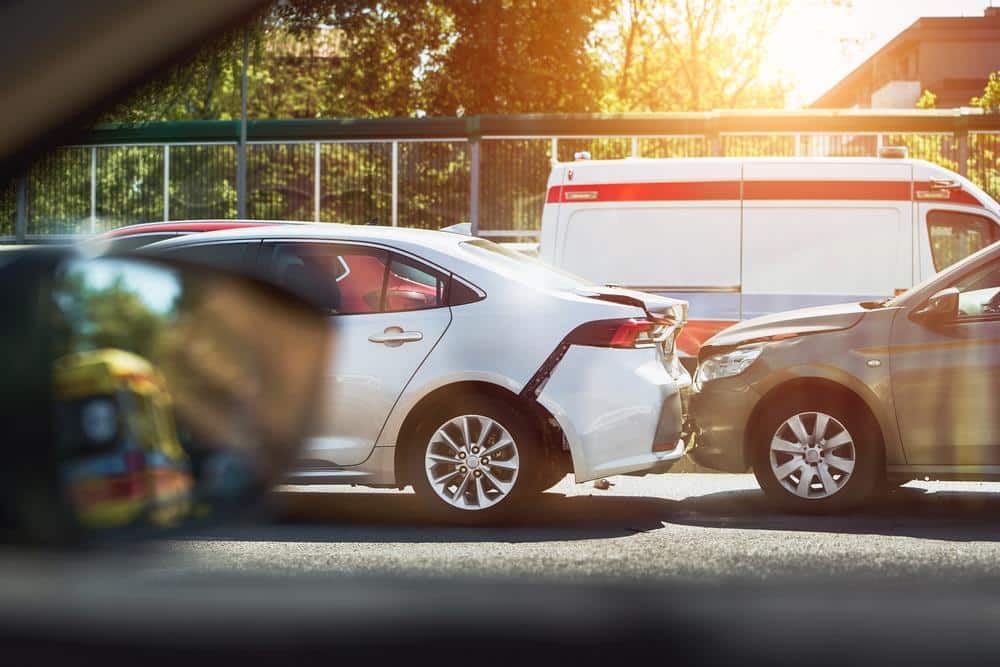Is the Driver Behind Always at Fault in a Rear-End Accident in Maryland?

It’s a common belief that the driver behind is always at fault in a rear-end collision in Maryland, but that’s not always the case. While drivers are expected to maintain a safe following distance to avoid crashes, sudden stops, mechanical failures, or unsafe road conditions can shift liability.
In some cases, the front driver’s actions—such as making a sudden, illegal maneuver—may contribute to the accident, making the fault more complex to determine.
If you’ve been in a rear-end collision, Leppler Injury Law can review the facts with you. Experienced Baltimore car accident lawyer John Leppler has handled these cases across Maryland and can explain what your options are.
Determining Fault in a Rear-End Collision
In Maryland, the driver in the rear is generally considered at fault and is held liable for damages for a rear-end collision. However, there are exceptions in which the driver in front could be responsible.
The law expects drivers to keep a safe distance from the car ahead, allowing enough time to stop if traffic slows or stops suddenly. This expectation is backed by Maryland Transportation Code Annotated, § 21-310(a), which makes it clear that following too closely is prohibited.
Most rear-end collisions happen because the following driver was distracted, speeding, or didn’t leave enough room to brake safely. If a driver crashes into the back of another car in stop-and-go traffic or at a red light, fault is usually clear.
Situations Where the Driver in Front Could Be Responsible
There are cases where the driver in the front could be liable for causing a rear-end collision. What they did—or didn’t do—can make a difference.
Here are some situations where fault might fall on the front driver:
- Hard stop for no reason: If the lead driver slams on the brakes out of nowhere with no traffic or hazard ahead, that move could be considered careless.
- Brake checking: Some drivers hit their brakes on purpose to scare or send a message to the car behind them. It’s aggressive and can lead to a crash.
- No working brake lights: If the rear lights don’t flash, the car behind doesn’t get a fair warning. That missing signal could shift the blame.
- Cutting in too close: If someone changes lanes quickly and leaves no space, the person behind may not have enough time to react. The front car might be at fault because of that.
- Pulling out when it’s not clear: If a driver enters traffic without enough room, they could be responsible for a crash—even if they were hit from behind.
- Stopping in the road with no cause: If the car in front stops in the middle of the street without a clear reason, that’s not normal driving behavior, so they will be at fault.
- Start of a chain reaction: In a multi-car crash, if the lead vehicle triggers the first hit, that may be where the fault begins.
Contributory Negligence in Maryland
In most states, if two drivers share the blame for a crash, they can still recover partial compensation. Not in Maryland. Here, in accordance with strict pure contributory negligence laws, if you’re even slightly responsible—just 1%—you lose the right to collect damages. It doesn’t matter how badly you were hurt or how careless the other driver was. Shared fault cancels out any recovery.
Let’s say the rear driver was going too fast, but the front driver stopped short without cause. If it turns out that both drivers contributed to the crash—say, 70% and 30%—neither one can recover. Both are stuck with their own bills, even though one was clearly more at fault than the other. That’s how this rule works.
Because of this rule, determining who caused the crash—and whether one party was entirely responsible—is critical. Witness statements, video footage, road conditions, and vehicle damage all help paint the picture. Without clear evidence showing the other party was 100% at fault, an injured driver may be out of luck under Maryland law.
Maryland Rear-End Accident Lawyer
A rear-end crash might not look severe at first, especially if it happens at lower speed. But injuries like whiplash or back strain can take time to show up, and what seems like a minor collision can lead to weeks of recovery and medical costs.
If you’ve been involved in a rear-end collision in Maryland, figuring out who’s responsible isn’t always as simple as it seems. As we stated, even if the other driver hit you from behind, that doesn’t automatically make them liable. And because of Maryland’s contributory negligence law, your ability to recover compensation could depend on proving that you had no role in causing the crash.
That’s where working with an experienced attorney matters.
John Leppler focuses on personal injury law in Maryland and understands the challenges that come with rear-end accident cases. From the start, he’ll take the time to listen to what happened, review the details, and explain where you stand under the state law. If there’s a path to compensation, he’ll build a strong case using the evidence available—photos, medical records, witness accounts, and more.
These cases can be frustrating, especially when fault is disputed. But you don’t have to deal with the process alone. If you’ve been hurt in a rear-end accident and want to know your options, Contact John Leppler for a free consultation. He is always ready to help.
